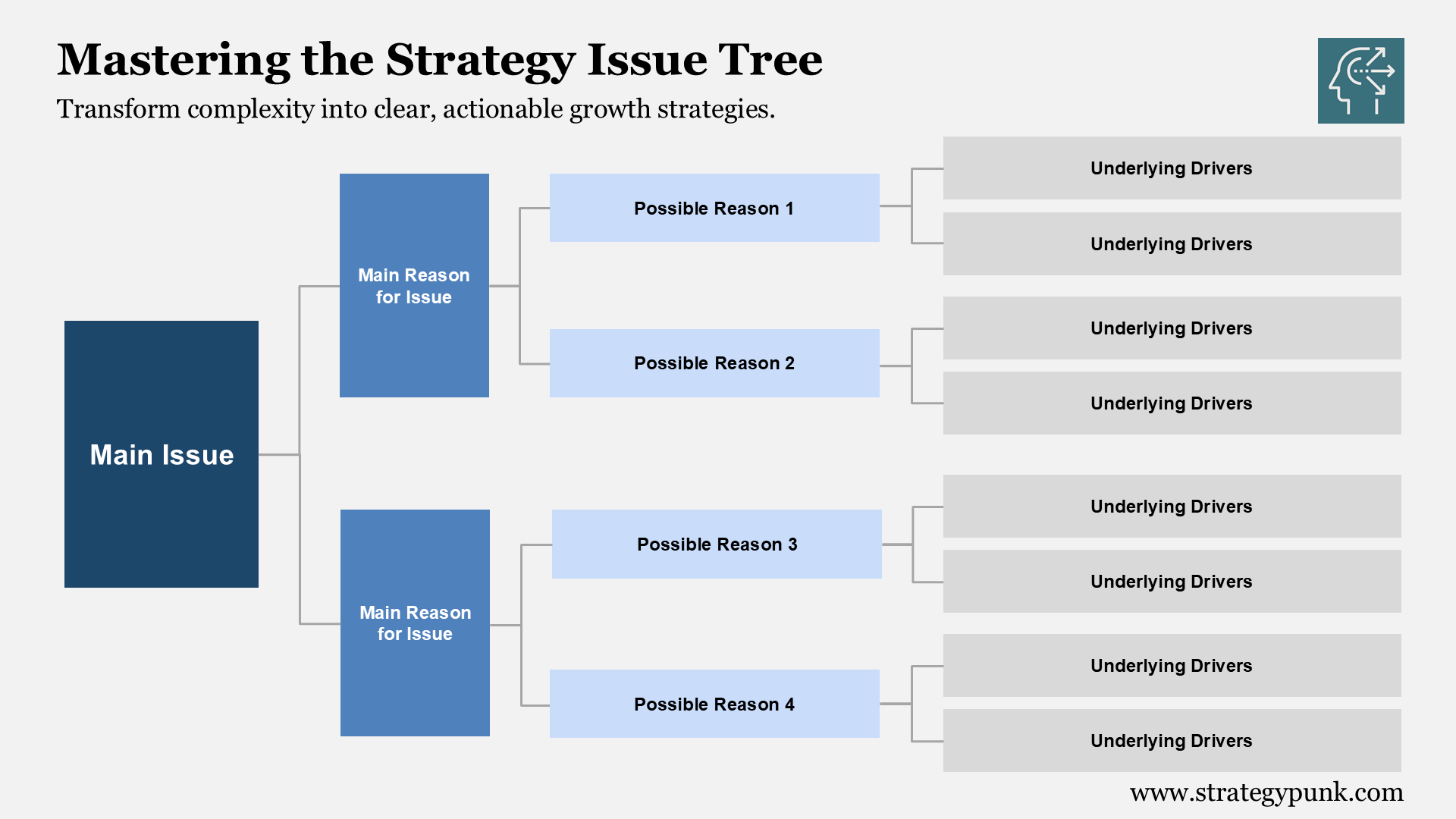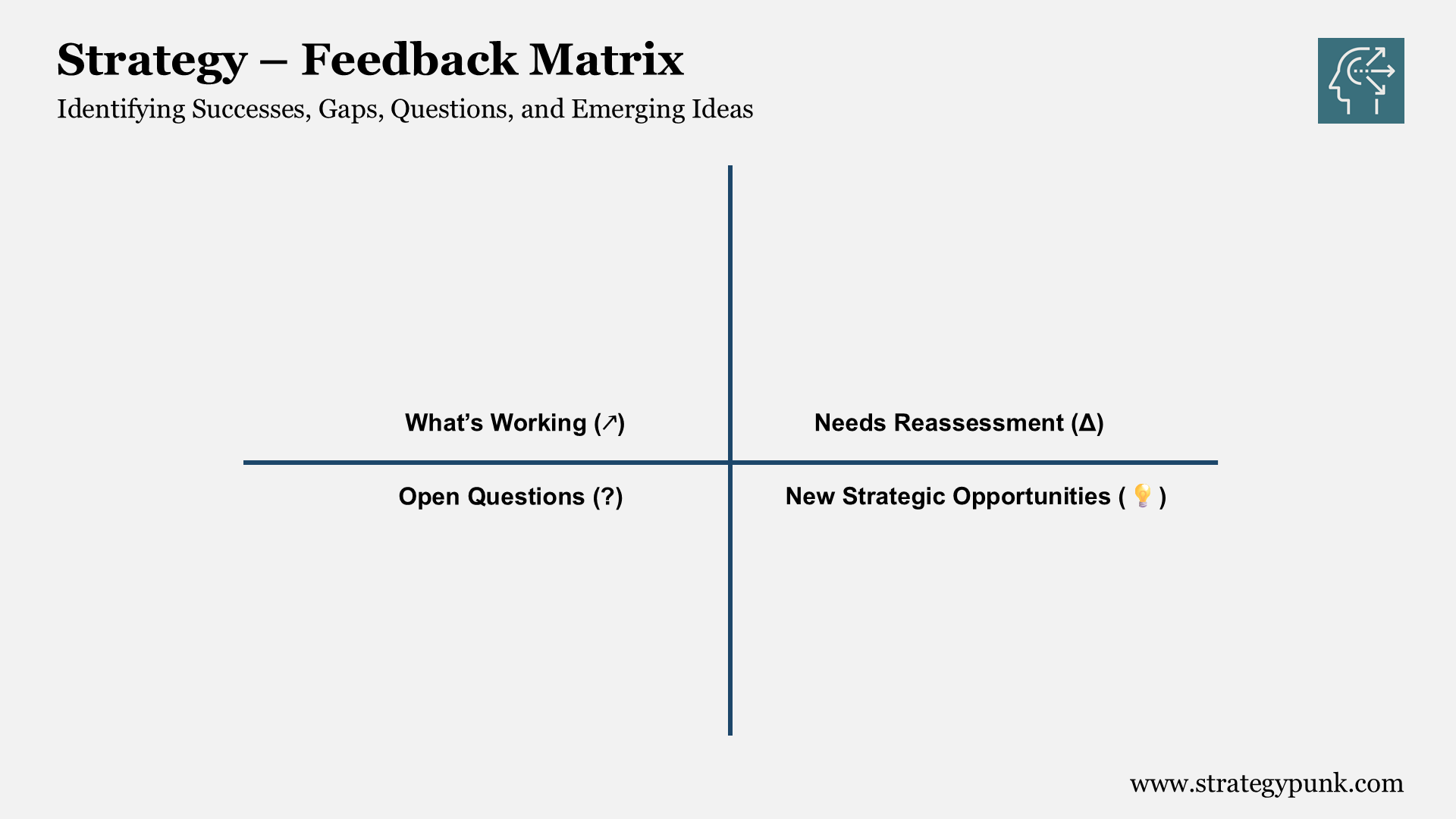5 Steps to Develop a Growth Strategy That Works (Free PPT Template)
Explore our straightforward 5-step growth strategy. Download free PDF and PPT templates to start expanding your business effectively today!
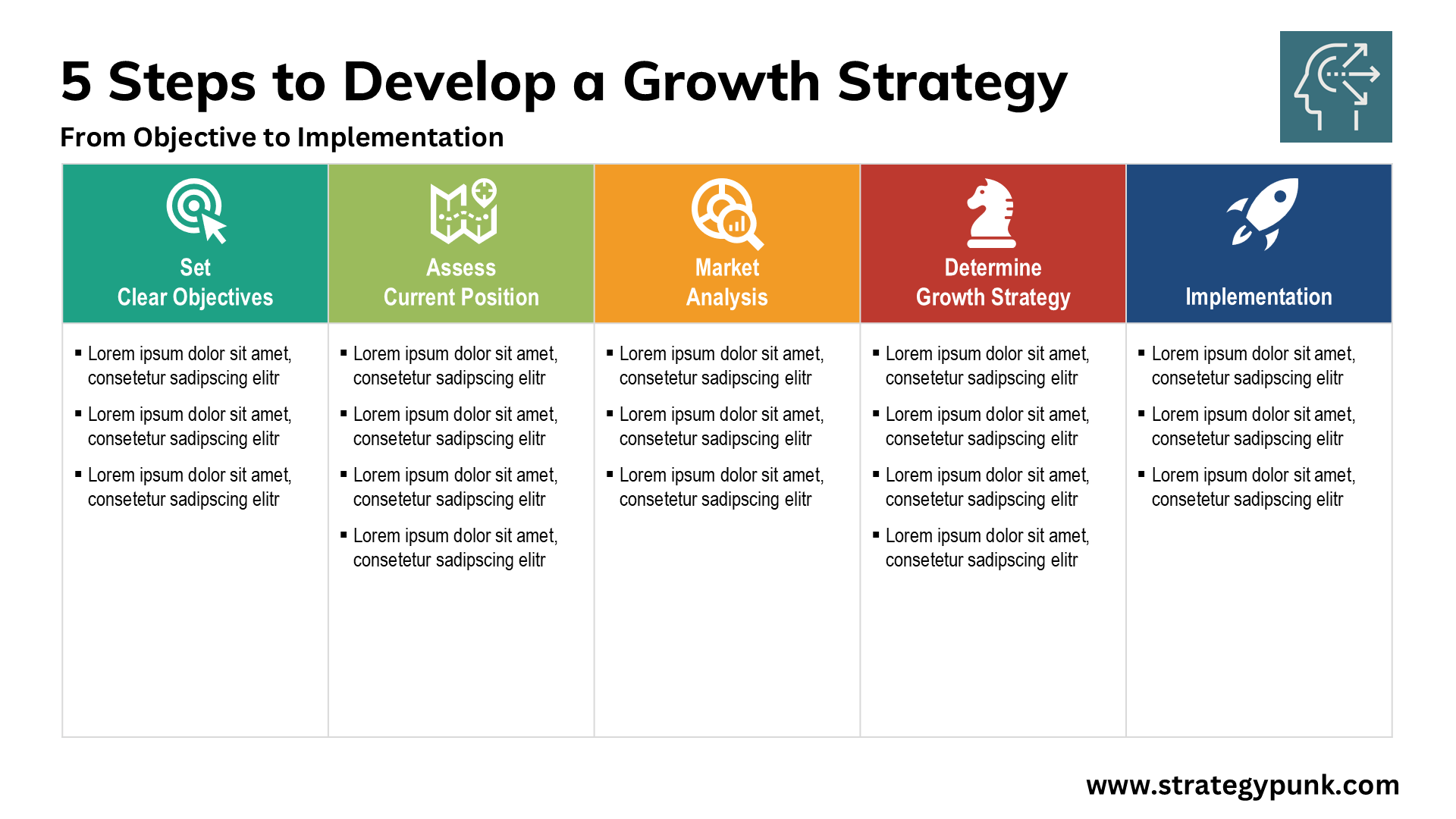
Have you ever watched a plant grow?
It doesn't happen by accident. It needs the suitable soil, water, sunlight, and care. Your business growth works the same way. You can't just wing it and hope for the best.
Too many businesses fail because they jump into growth strategies without a plan.
Today, I will break down the five essential steps to help you develop a growth strategy that works—no fluff, just practical steps you can immediately implement.
I've created a free PowerPoint and PDF template that walks you through each step of this process.
1. Set Clear Objectives - Know Your Destination
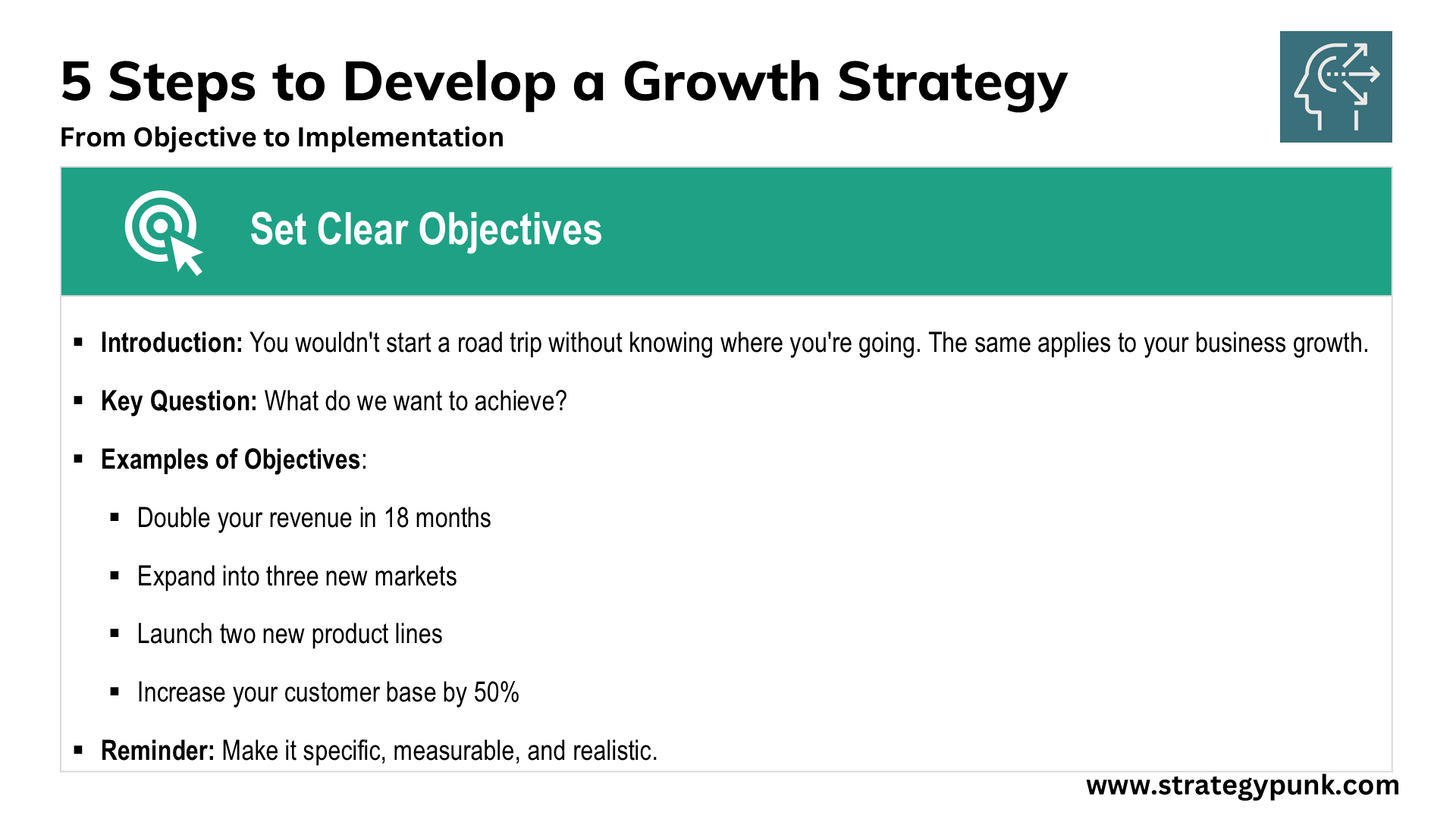
You wouldn't start a road trip without knowing where you're going. The same applies to your business growth.
Start by asking yourself: "What do we want to achieve?"
Maybe you want to:
- Double your revenue in 18 months
- Expand into three new markets
- Launch two new product lines
- Increase your customer base by 50%
Whatever it is, make it specific, measurable, and, most importantly, realistic. I've seen too many businesses fail because they set objectives that looked good on paper but were impossible to achieve in practice.
2. Take a Hard Look at Where You Stand
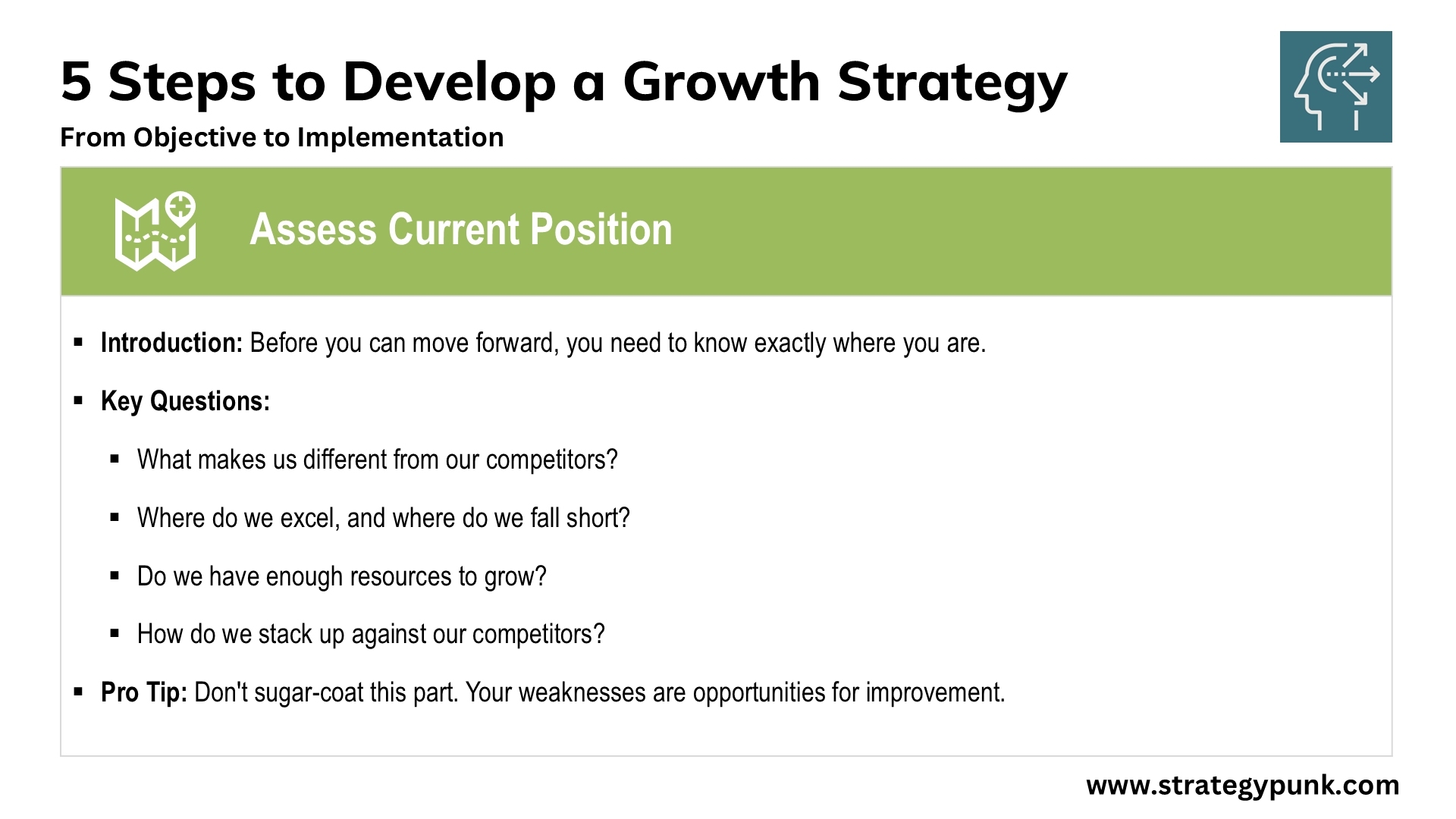
Before you can move forward, you need to know exactly where you are. This means taking an honest look at your current situation.
Ask yourself these tough questions:
- What makes us different from our competitors?
- Where do we excel, and where do we fall short?
- Do we have enough resources to grow?
- How do we stack up against our competitors?
Pro tip: Don't sugar-coat this part. I've worked with companies that ignored their weaknesses, and it always came back to bite them. Your weaknesses aren't deal-breakers - they're opportunities for improvement.
3. Read the Room - Understand Your Market
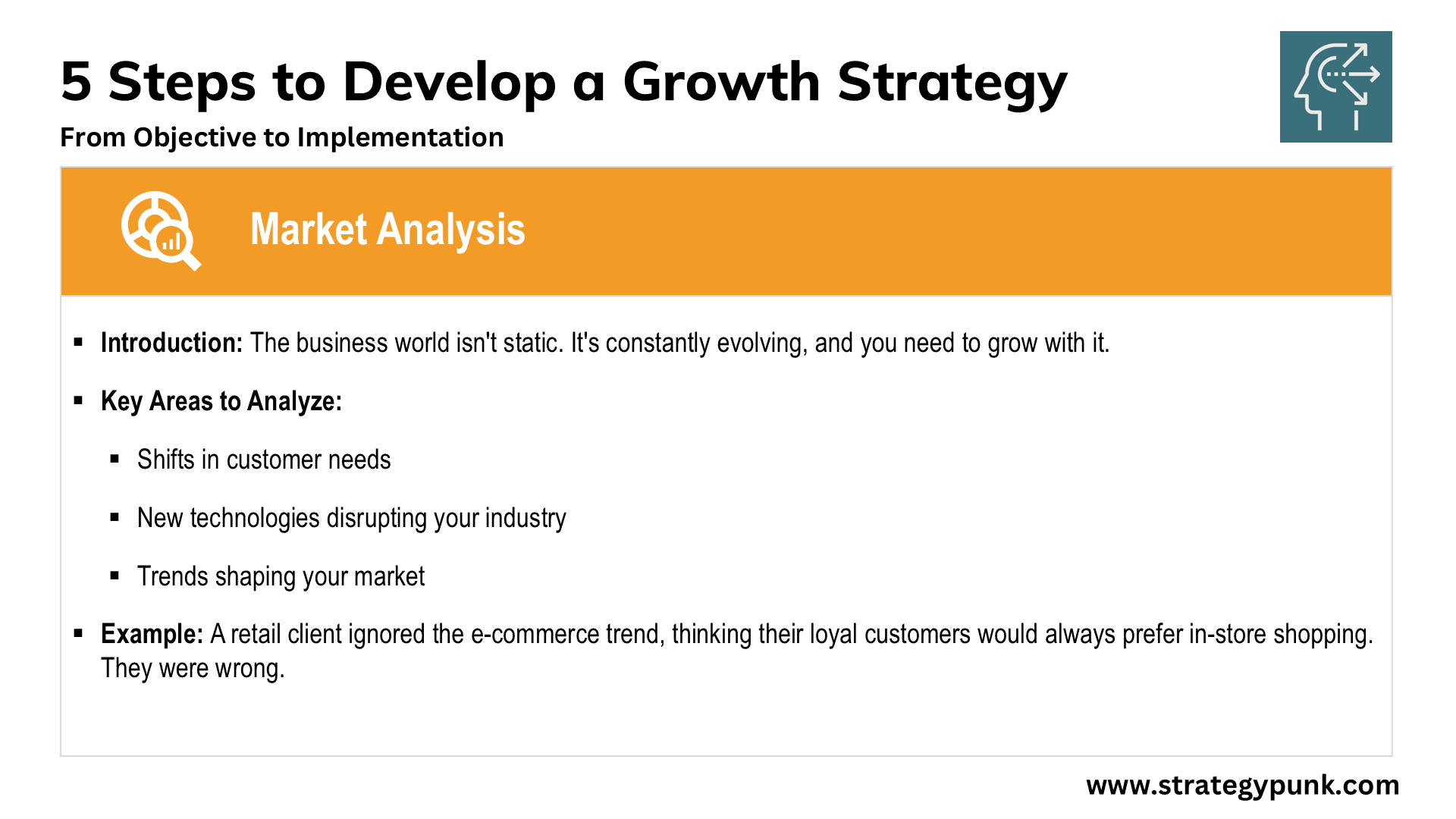
The business world isn't static. It's constantly evolving, and you need to grow with it.
Here's what you need to analyze:
- How are your customers' needs shifting?
- What new technologies are disrupting your industry?
- What trends are shaping your market?
I remember working with a retail client who ignored the e-commerce trend. They thought their loyal customers would always prefer in-store shopping. They were wrong. Don't make the same mistake. Stay ahead of the curve.
4. Choose Your Path - Determine Your Strategy

Now comes the exciting part - choosing your growth strategy. But remember, excitement shouldn't cloud your judgment.
Ask yourself:
- Does your team have the expertise to execute this strategy?
- Can you afford to implement it correctly?
- Do you have enough people to make it happen?
I always share a reality check: the best strategy isn't always the most ambitious one. It's the one you can execute with your current resources and capabilities.
A small business I advised wanted to expand internationally. But after analyzing their resources, we realized they'd be better off dominating their local market first. Sometimes, taking a step back helps you leap forward later.
5. Make It Happen - Implementation Is Everything
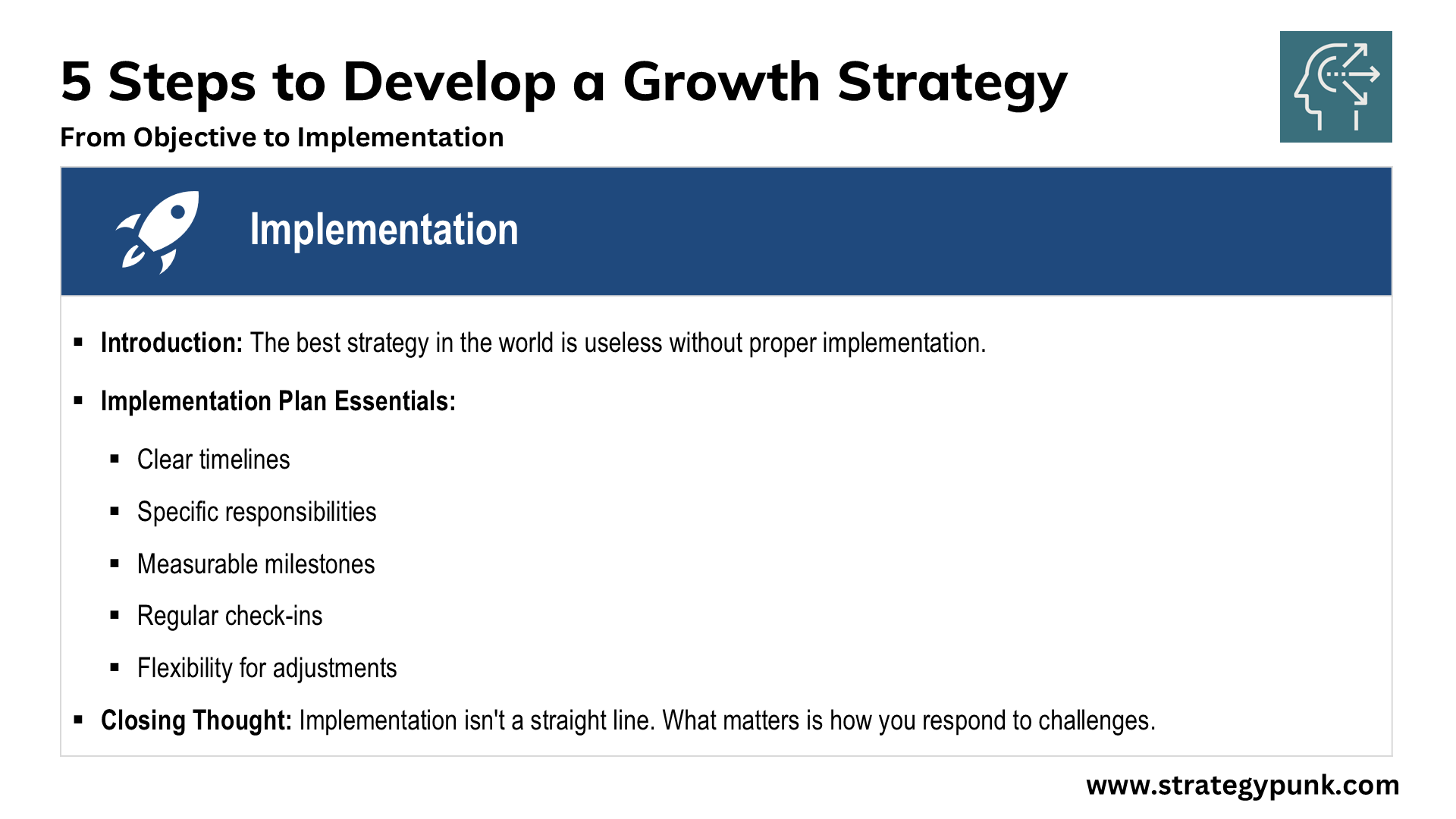
This is where the rubber meets the road. The best strategy in the world is useless without proper implementation.
Your implementation plan should include:
- Clear timelines
- Specific responsibilities
- Measurable milestones
- Regular check-ins
- Flexibility for adjustments
Remember this: implementation isn't a straight line. You'll hit bumps along the way. That's normal. What matters is how you respond to these challenges.
The Bottom Line
Growing your business isn't about making wild guesses or following your competitors' lead. It's about creating a structured, realistic plan that aligns with your capabilities and market realities.
I've seen businesses transform by following these five steps. But here's the key: take your time with them. Each step builds on the previous one. Skip one, and your whole strategy could crumble.
Start today. Take out a piece of paper. Write down your objective. That's step one. Tomorrow, could you move on to step two? Before you know it, you'll have a growth strategy that's not just ambitious but achievable.
Remember: the best time to plant a tree was twenty years ago, and the second best time is now. The same goes for developing your growth strategy. Get started today.
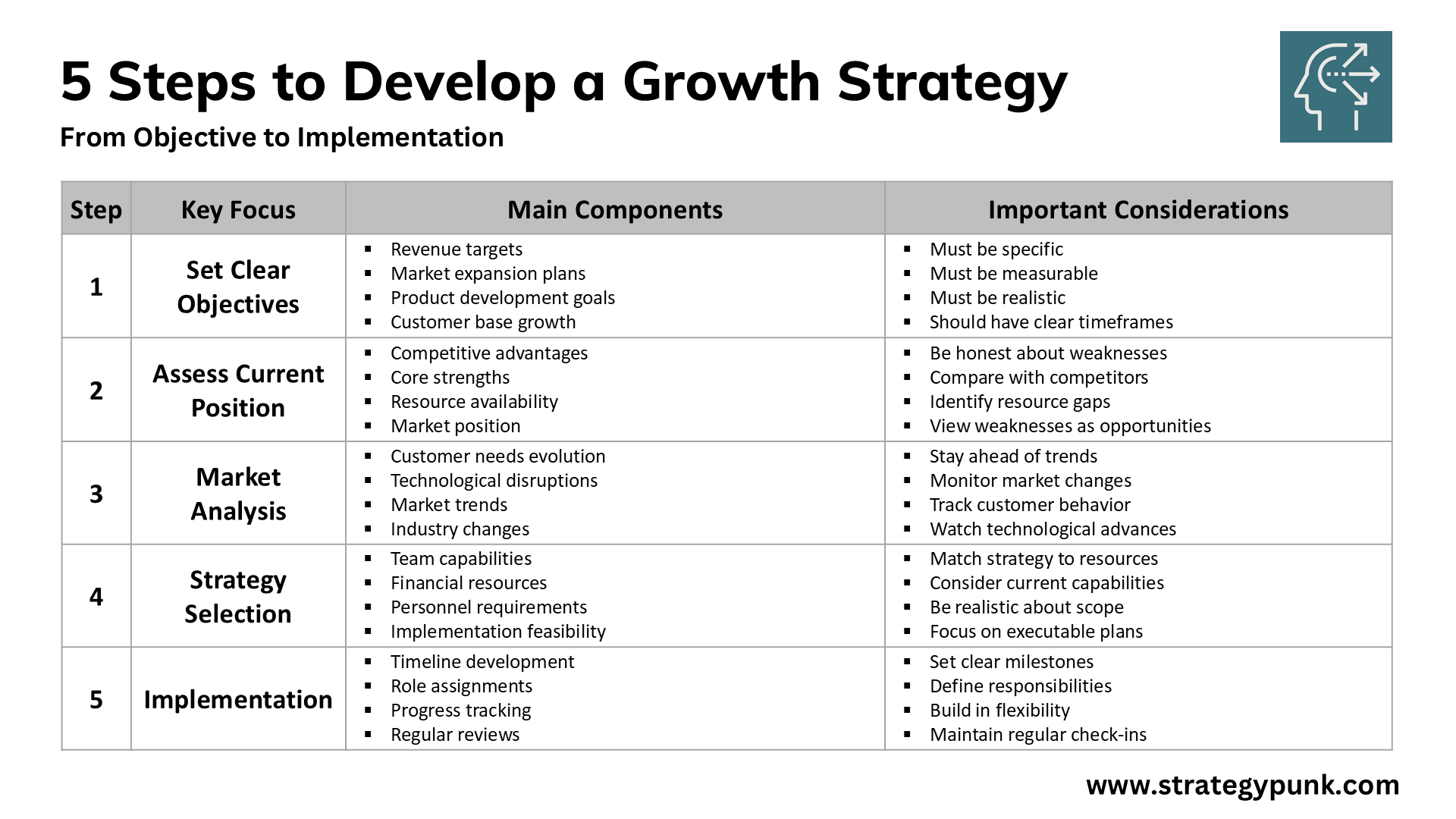
Frequently Asked Questions
FAQs About Growth Strategy
How long does it typically take to develop and implement a growth strategy?
The timeline varies depending on your business size and complexity, but typically, expect to spend 4-6 weeks developing a solid strategy and 3-6 months seeing initial implementation results. A common mistake I see is rushing through the planning phase. Remember, a week of good planning can save you months of headaches later.
Think of it like building a house - you wouldn't skip the blueprint phase to start building sooner. The same applies here. Could you take the time to do it right, especially during the analysis and market research phases?
We're a small business with limited resources. How can we create a growth strategy that works for us?
Start small and focus on one growth initiative at a time. I've worked with many small businesses that successfully grew by identifying their most significant opportunity and channeling all their resources there. For instance, one local restaurant I advised focused solely on building their catering business before expanding into other areas.
The key is to be realistic about your resources and choose strategies that give you the biggest bang for your buck. Sometimes, this means saying no to good opportunities so you can say yes to great ones.
How do we know if our growth strategy is working?
It would be best if you had clear metrics from day one. Think of it like a health check-up for your business. Track leading indicators (like customer engagement, website traffic, or sales calls) and lagging indicators (revenue, profit margins, or market share).
Set up monthly review meetings to assess these metrics. If you're not hitting your milestones, make adjustments before the end of the year. A good strategy should be flexible enough to adapt when things aren't working as planned.
What are the most common mistakes companies make when developing their growth strategy?
The biggest mistake I see is copying competitors without understanding the underlying reasons for their success. Just because your competitor is expanding internationally doesn't mean that's right for you. Another common pitfall is not getting buy-in from your team early in the process.
I once worked with a company that created an ambitious growth plan without consulting their front-line managers. The result? It was a beautiful strategy that was impossible to implement because the team didn't believe in it and wasn't equipped to execute it.
How do we balance growth with maintaining quality and customer satisfaction?
Many businesses overlook this crucial question. Growth should never come at the expense of your core value proposition. Could you start by documenting your current processes and quality standards? Then, for each growth initiative, create a specific plan for maintaining these standards at a larger scale.
One practical approach is to grow in phases. A software company I worked with would only take on new customers when they were confident they could maintain their 24-hour support response time. Yes, this meant slower growth, happier customers, and more substantial long-term success.
5 Steps to Develop a Growth Strategy
free PDF and PowerPoint Template
5 Steps to Develop a Growth Strategy Template
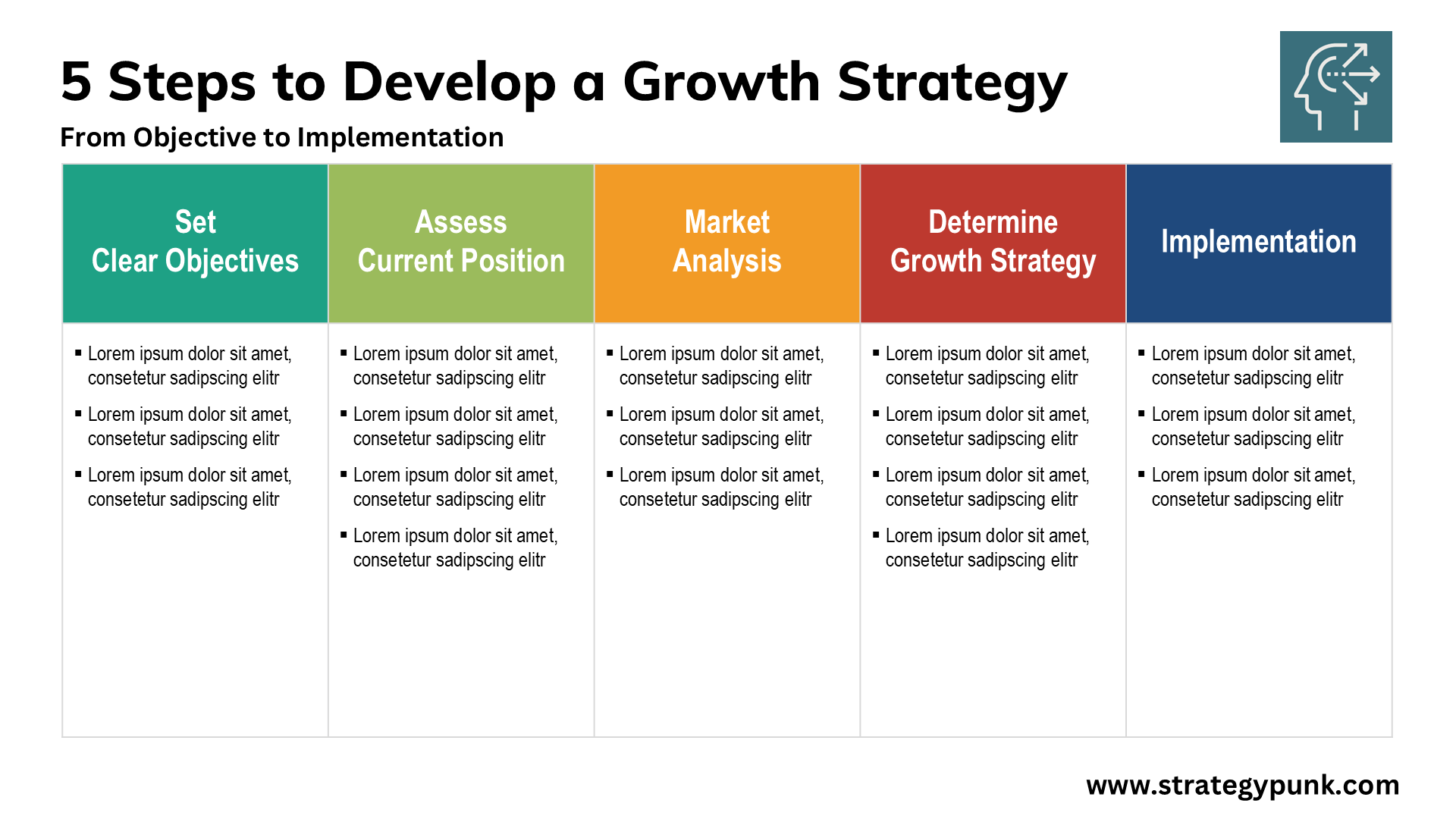
Set Clear Objectives:
- Question: "What Do We Want To Achieve?"
Assess Current Position:
- Questions:
- "What are Our Strengths / Weaknesses?"
- "Do We Have Enough Resources?"
- "How Are Our Competitors Positioned?"
Analyze Market and Industry Developments:
- Questions:
- "How Are Customer Needs Changing?"
- "How Is Technology Changing?"
Determine Growth Strategy:
- Questions:
- "Do We Have The Necessary Know-How?"
- "Are The Financial Resources Available For Implementation?"
- "Is There Enough Staff To Implement The Project?"
Implement:
- Putting the strategy into action.
Download Your Free Growth Strategy Template
Note: The template includes customizable slides for each step discussed in this post.
No email is required—it's our gift to help you succeed! We would still appreciate it if you sign up for our newsletter or support us with a small donation.




